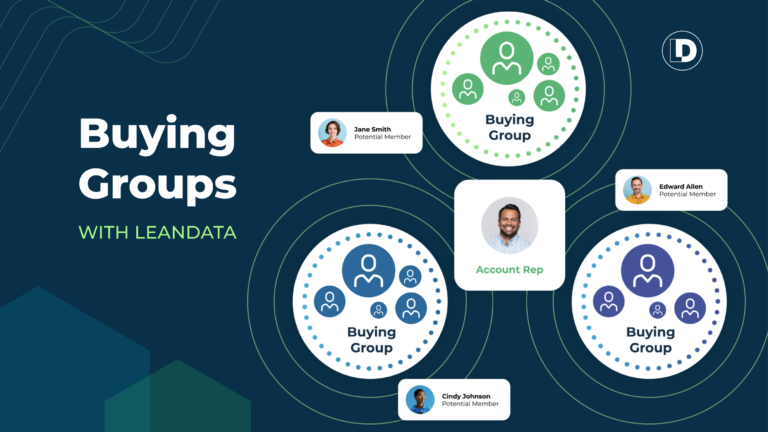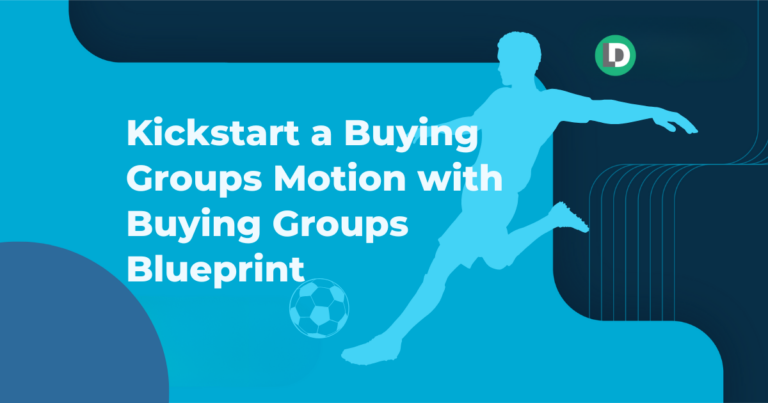The buying groups revolution is reshaping B2B go-to-market strategies, leaving outdated MQL-centric models behind.
For years, MQLs ruled the world, but now leads are too small a target, while accounts are too broad. Neither truly reflects how buying decisions happen.
The real sweet spot? Buying groups, where multiple decision-makers within an account collaborate to make purchasing decisions.
When marketing and sales teams align around a buying groups go-to-market motion, case studies have proven it leads to greater efficiency, better alignment, and faster pipeline growth.
After years of debate, a buying groups motion has now hit an inflection point, with widespread adoption driven by technology, vendor support, and proven business impact.
Still want your MQL-centric processes? Read on to learn why it’s costing you millions.

Why MQL-Centric Processes Are Holding You Back
It’s an age-old problem:
The Marketing team is high-fiving each other over all the Leads pouring into the pipeline, while the Sales team is complaining about lousy Leads.
The problem usually starts when Marketing passes Leads to Sales too early in the buying cycle. Then, as Leads are thrown over the proverbial fence, it’s a jump ball as to who’s going to nurture the Account. Is Sales responsible for connecting the dots? Is Marketing supposed to be performing outreach on other buyers at the Account?
The Hidden Costs of MQLs
More and more Sales and Marketing teams are noticing that the old go-to-market processes are breaking down. Here are the tell-tale signs:
- The majority of Opportunities are either Closed-Lost or recycled
- Lead-to-Opportunity conversion rates are low, wasting resources and spending
- Opportunities have only one Contact when there are obviously more people on the buying team
- The Sales team has no visibility into the interactions of the full buying team
- SDR, BDR, and Marketing teams are chasing after high Lead volumes that don’t convert down the funnel
The Disconnect Between Buyers and Sellers
Today’s buyer’s journey has two key phases: first, the research phase, where they explore solutions, and second, the decision phase, where they’re ready for a sales conversation.
In contrast, today’s outdated sales playbook engages buyers too early. Marketing produces leads, passes them to sales, and an SDR/BDR attacks the lead. This is what an MQL model perpetuates. As a result, sales teams struggle to engage leads effectively, if at all.
The buyer wants to do research. In fact, they want sellers to make the research process easy (no gated content).
The buyer will tell you when they’re ready for sales to step in and have conversations.
Until companies reorient their user experience and drive a better research experience for the buyer, sales teams will continue struggling to force a process that no longer fits how people actually buy.

What Are Buying Groups & Why Do They Matter?
For high-consideration, direct-purchase products, the new B2B buyer is not an individual, but a group of individuals, working together on a buying committee, making a collective decision to buy. This is the buying group.
Next, buying groups vary in size. In Forrester’s revenue operations survey, 94 percent of sellers reported they sell to groups of three or more individuals. Thirty-eight percent sell to groups of 10 or more.
Each person in the buying group has their own needs, priorities, and concerns. Some people have the power to make the final decision, while others provide important input that influences the final decision.
The Power of Signals in Identifying Buying Groups
Would you rather:
(A) Have one individual from one company download three of your company’s white papers, attend a webinar, and interact with your AI SDR?
(B) Have three individuals from the same company each download three different solution briefs from your website within a 30-day period?
The correct answer is B.
- Multiple contacts signal stronger intent: Engagement from multiple people at the same company is a more reliable buying indicator than a high lead score from just one individual.
- MQLs ignore key signals: A rigid MQL-focused approach overlooks critical buying signals from multiple stakeholders within an account.
- Every action generates a signal: Every interaction from a buying group member, whether known or anonymous, provides valuable insight into their interest and intent.
- Listening to signals is key: The most important thing sellers can do is track these signals, understand their context, and connect them to the right opportunity.

The Business Case for Moving to Buying Groups
Businesses that adopt a buying group approach see higher conversion rates, improved pipeline velocity, and better attribution of marketing efforts to revenue impact.
Not to mention, organizations leveraging buying groups are better positioned to align sales and marketing efforts, reducing friction and improving efficiency in revenue generation.
And last, technology has now reached a point where buying groups can be operationalized, automating the identification, tracking, and engagement of these groups at scale.
The Revenue Impact of Buying Groups
Companies that embrace this approach are gaining a competitive advantage by systematically increasing the likelihood of winning deals, shortening sales cycles, and maximizing expansion opportunities within existing accounts.
In a Forrester webinar, LeanData customer Reltio shared the following benefits that resulted from their shift to buying groups:
- 20% increase in actionable sales pipeline
- Opportunities advanced 24% faster than prior year
- Closed Lost Opportunities reduced by 50%
- 20% YoY increase in pipeline
In addition, Reltio reports their BDRs now have more pipeline to work with and the quality of pipeline is better than under their previous MQL model.

How to Operationalize Buying Groups in Your Organization
In order to make a buying groups-focused revenue process transformation happen, the focus must change. Sellers are now concerned with the way their buyers want to buy, not the way they want to sell. In addition, sellers will now pay more attention to buying signals instead of MQLs.
This involves changing the way sales and marketing teams work.
Step 1 – Stop Treating Every Lead as a Lone Wolf
- Move away from individual leads (MQLs) to recognizing multiple buying signals from multiple members of a buying committee.
- Add additional people to the buying group, regardless of the opportunity stage
Step 2 – Use Signal Intelligence to Drive Sales Efficiency
- Use zero-party, first-party and third-party intent data to identify buying group members.
- Leverage tools like LeanData for buying group orchestration.
Step 3 – Change the Way Marketing and Sales Collaborate
- Redefine the qualification and handoff processes between marketing and sales.
- Teach BDRs to engage with entire buying groups rather than individuals.

Overcoming Resistance & Driving Change
Convincing sales and marketing leadership, demand gen teams, and even IT departments to adopt a new approach when they are accustomed to traditional lead generation systems and processes can be challenging.
The Cultural Shift: “We’ve Always Done It This Way”
According to Terry Flaherty, VP and Principal Analyst at Forrester, the main reason companies have not made the shift to a buying groups motion is simply: culture.
Marketing Concerns
Marketing leaders may have spent years refining their lead-based of ABM metrics. Shifting to buying groups means redefining success metrics and potentially changing compensation structures.
Sales Concerns
Also known as “sacred object syndrome,” Sales leaders may not want marketing to touch opportunities. In a buying groups motion, both marketing and sales continue to add contacts to the buying group to move the deal forward faster, even after an opportunity has been created.
IT Concerns
IT professionals may have configured the CRM and MAP for lead-centric or account-based motions. Therefore, a shift to buying groups may require customizations, integrations, or even new tools.
Proving the Business Impact
The best way to get executive stakeholders aligned on a buying groups GTM motion is to provide a clear business case. It’s essential to prove the revenue impact these changes will bring to your organization.
LeanData’s Buying Groups Blueprint initiates this transformation by providing an in-depth analysis of your past opportunities, surfacing buying group members beyond those explicitly added by sales reps, delivering a more complete view of the people engaged in your historic opportunities.
In addition, Blueprint assesses your organization’s readiness to adopt a buying groups motion, providing insights that guide decisions on processes, data, and technology.
The Future of B2B Revenue Growth is Buying Groups
For many organizations, a B2B buying groups motion is the new standard for revenue efficiency.
Shifting to a buying groups motion means evaluating your internal processes, understanding industry best practices, mastering data management strategies, and possibly adopting new technologies.
More than just strategy, this shift impacts the cultural and operational mindset for your sales and marketing teams.
The journey to adopting a buying group motion presents challenges, but the rewards are significant:
- Increased revenue
- Improved conversion rates
- Enhanced internal efficiency
- Better alignment between sales and marketing teams
And here’s the good news: you can start with buying groups today. All you need is your CRM and LeanData.
Let’s get the ball rolling.










